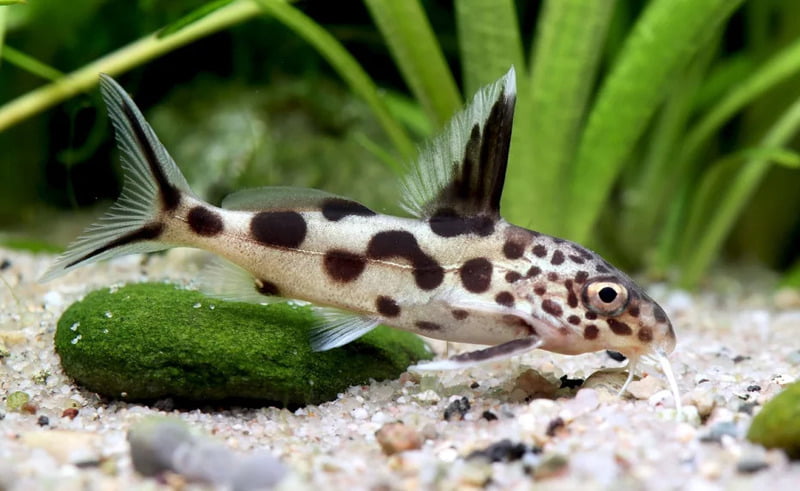
Synodontis Multipunctatus (Cuckoo Catfish)
Non-returnable
$50.00
Synodontis multipunctatus, commonly known as the Cuckoo Catfish, is a species of catfish native to Lake Tanganyika in East Africa. Here are some key features and information about this species:
Behavior and Reproduction:
- Cuckoo Catfish are known for their unique reproductive strategy. They are brood parasites, which means they do not build nests or care for their own eggs. Instead, they lay their eggs in the nests of mouthbrooding cichlids.
- The catfish eggs mimic those of the cichlids, and once the cichlid picks up the eggs in its mouth, the Cuckoo Catfish releases its own eggs into the cichlid's mouth, where they are incubated and eventually hatch.
Appearance:
- These catfish have a distinctive appearance with a streamlined body and a forked tail.
- The body is typically brown or gray with numerous small black spots, giving them a speckled or punctuated appearance.
Size:
- Cuckoo Catfish can reach a size of around 6 to 8 inches (15 to 20 centimeters) in length.
Habitat:
- They are found in Lake Tanganyika, which is one of the African Great Lakes. Lake Tanganyika is known for its clear, deep waters and diverse aquatic life.
Tank Requirements:
- If you plan to keep Cuckoo Catfish in an aquarium, it's essential to replicate their natural habitat. Provide a tank with ample hiding spots, rocks, and caves.
- Maintain good water quality and consider a sandy substrate to mimic the lake bottom.
Diet:
- Cuckoo Catfish are omnivores. In their natural habitat, they feed on a variety of small invertebrates, crustaceans, and other small organisms.
- In captivity, they can be fed a well-balanced diet of high-quality pellets, live or frozen foods like bloodworms and brine shrimp.
Compatibility:
- These catfish can be kept with other Lake Tanganyika cichlids, but it's crucial to choose tankmates carefully to ensure compatibility and prevent aggression.
Always do thorough research and provide appropriate care to meet the specific needs of Synodontis multipunctatus if you plan to keep them in an aquarium. Understanding their unique reproductive behavior is essential for successful captive care.
Size
Choose Quantity



